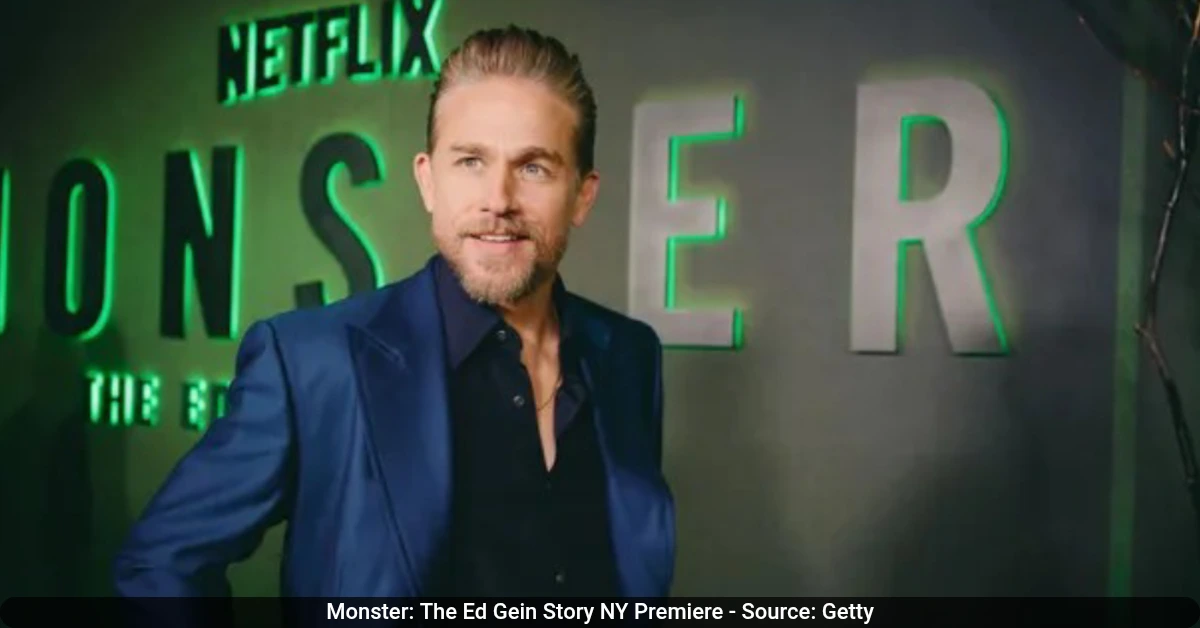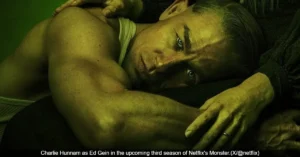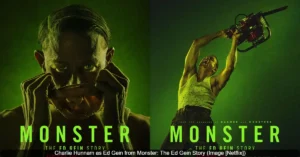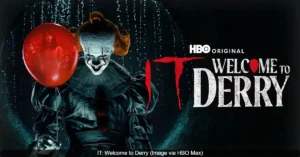Charlie Hunnam’s performance as Ed Gein in the 2025 Netflix series Monster: The Ed Gein Story is being called a career-defining achievement. The actor underwent a complete physical and vocal transformation to portray the infamous 1950s serial killer, delivering a performance that is both haunting and deeply human. Here are the standout moments that showcase his creative prowess.
The Power of Silence
One of Hunnam’s most powerful tools in the series is his use of silence. In moments where Ed is alone, simply sitting and staring into nothingness, Hunnam communicates profound loneliness and inner turmoil without saying a word. His hunched posture, labored breathing, and exhausted eyes tell a complete story of Ed’s isolation and shame. These quiet scenes allow viewers to witness the character’s internal pain, proving that horror can be as much about psychological weight as it is about graphic violence.
A Troubled Childhood
The series uses flashbacks to show Ed Gein as a young boy living under the strict and abusive control of his mother, Augusta, played by Laurie Metcalf. Hunnam brilliantly reflects how a child’s innocence can slowly curdle into fear and confusion. Through subtle facial expressions and a generally quiet nature, he conveys a deep history of emotional pain with very little dialogue. These early scenes establish the foundational trauma that would eventually mold Ed’s deranged mind, with Hunnam managing to evoke both sympathy and unease simultaneously.
The Awkward Diner Encounter
In a scene at a local diner, Ed attempts to have a normal conversation with two women but is unable to suppress his deep-seated discomfort. Hunnam masterfully blends a awkward charm with an underlying creepiness that keeps the audience on edge. His nervous grin and darting eyes perfectly capture Ed’s desperate wish for human connection, which is constantly undermined by his inner demons. This moment is particularly memorable because it generates intense psychological discomfort without relying on violence or horror, showcasing Hunnam’s ability to create tension through nuanced performance.
The Grave Robbing Sequence
Perhaps one of the most chilling scenes is Ed’s nighttime excavation of a grave. Hunnam is both horrifying and heartbreaking to watch. Instead of playing the moment as a one-dimensional monster, he portrays a man who is utterly consumed by his compulsions and subsequent guilt. His shaking hands and labored breathing let the audience feel his terror and self-disgust. The camera lingers on his internal battle between repulsion and a twisted sense of grief, demonstrating Hunnam’s skill in blending terror with tragedy.
Breaking the Fourth Wall
In a meta-commentary on society’s fascination with true crime, the series features a scene where Ed Gein breaks the fourth wall. He looks directly into the camera and tells the audience, “You’re the one who can’t look away.” This moment, conceived by the creators, turns the viewer’s gaze back on themselves. Hunnam’s delivery is perfectly unsettling, forcing the audience to question their own role in consuming such a macabre story. It’s a bold creative choice that he executes with precision.
The Psycho-Inspired Shower Scene
The series includes a chilling tribute to Alfred Hitchcock’s Psycho, reimagining the classic shower scene. Hunnam’s performance in the moments surrounding this sequence is filled with bewilderment, curiosity, and eventual emotional collapse. The focus is not on the gore but on the unraveling of a human psyche. Critics have noted this moment as a successful fusion of cinematic history with Hunnam’s daring creative decisions, showcasing his ability to incorporate psychological richness into iconic horror imagery.
The Diagnosis Revelation
A pivotal moment occurs in episode seven, when Ed is finally diagnosed with schizophrenia. Hunnam’s performance during his character’s breakdown is heartbreakingly vulnerable. His voice trembles, his eyes well with tears, and his silences speak volumes. Rather than playing the scene as pure madness, he infuses it with a palpable sense of humanity and agony. This allows viewers, if only for a moment, to glimpse the tormented man behind the monstrous crimes, a testament to Hunnam’s capacity to generate complex empathy.
A Surreal Musical Number
In a surprising and stylized sequence, Ed has a color-drenched dream reminiscent of All That Jazz where he is confronted by the legacy of his crimes and the other killers who idolized him. This surreal moment was shot in a single, grueling 17-hour day. Hunnam fully commits to the bizarre tone, navigating the emotional weight of the scene as Ed faces what he has wrought. It’s a risky creative swing that highlights his willingness to embrace the show’s more unconventional methods of storytelling.
The Final Visions
In the climactic scenes, Ed is tormented by visions of the people he has harmed and the atrocities he has committed. A dreamlike staircase sequence features Ed grappling with his past and the ghost of his mother. Hunnam’s face becomes a map of remorse, terror, and fleeting understanding. He transitions from sheer fear to a quiet, placid acceptance, demonstrating a masterful command over a wide emotional range. The finale reveals not just Ed’s destruction, but also Hunnam’s artistic genius in portraying a twisted search for redemption amidst madness.
The Voice of a Child
One of the most startling aspects of Hunnam’s transformation is the high-pitched, flutelike voice he created for Ed. Hunnam went to great lengths to research the character, even securing a rare, 70-minute audio recording of the real Gein from the night of his arrest. He based the voice on the idea that Ed developed a series of affectations to please his domineering mother. The result is a voice that is ethereal and childlike—a stark, unsettling contrast to his physical presence that adds a deeply disturbing layer to the performance.
The First Confrontation
The series opens with a confronting scene where Ed is caught by his mother while pleasuring himself and wearing women’s undergarments. This early moment sets the tone for the entire show, establishing Ed’s obsessions and his twisted relationship with his mother. Hunnam perfectly captures the shame, fear, and warped innocence of the character. It’s a brave and uncomfortable scene that immediately signals to the audience that this is not a typical crime drama, but a deep dive into a severely disturbed mind.
The performance Hunnam offers in Monster: The Ed Gein Story goes far beyond mere imitation. It is a comprehensive study in the emotional and psychological dynamics of storytelling, turning a terrifying true story into a complex human entity shadowed by fear, empathy, and tragedy in equal measure.
Also Read: The Truth About Ed Gein: The Real Story Behind the Town’s Babysitter and Handyman










